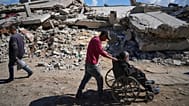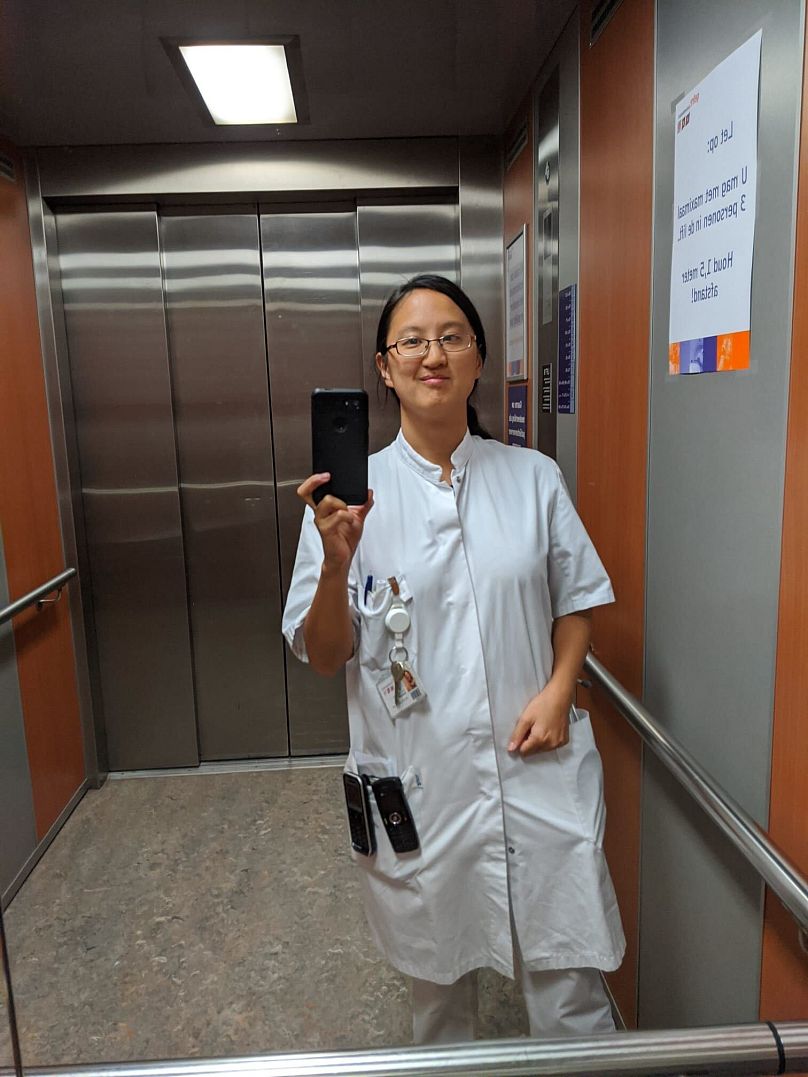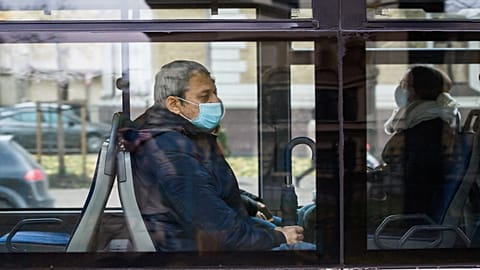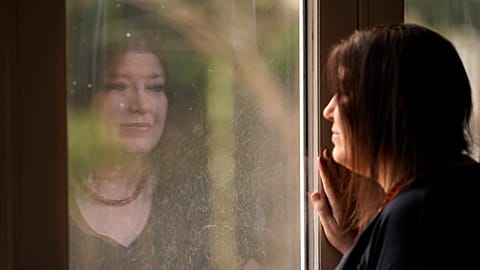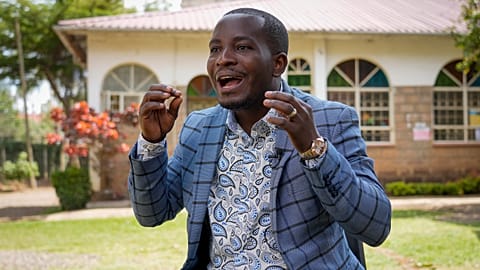Around 36 million people in Europe and Central Asia may be experiencing symptoms of long COVID, according to new estimates from the World Health Organization (WHO).
Fen van Rhijn was working in a pulmonology ward caring for COVID-19 patients in March 2022, when they contracted the virus.
Little did the 32-year-old internal medicine resident know that it would drastically alter their quality of life.
After weeks of suffering from COVID-19, Fen tried to go back to work at the hospital but would get dizzy and suffer from shortness of breath.
Months later, van Rhijn, who lives in Ede in the Netherlands, would receive an official diagnosis from their GP and now spends 22 hours of the day lying down because their heart races when they try to stand up.
"I was completely healthy. I could have run a half marathon and I could work seven days in a row for 12 hours and felt totally fine afterwards," they told Euronews Next.
"I had all these misconceptions about ill people, that I would never be like that. But now I am like that because no one chooses this illness. But it can happen to everyone," van Rhijn added.
36 million people suffering from long COVID
According to new estimates from the World Health Organization (WHO), 36 million people living in Europe and some parts of central Asia may have experienced long COVID in the three years since the beginning of the pandemic.
Long COVID is a post-viral condition characterised as symptoms that last after someone has recovered from a COVID-19 infection.
Symptoms of long COVID have included fatigue, shortness of breath, heart palpitations, cough, dizziness and more.
"That’s 1 in 30 who may still be finding it hard to return to normal life," said Dr Hans Kluge, WHO’s regional director for Europe, at a press conference on Tuesday.
Early on in the pandemic, sufferers described feeling abandoned, with relapses or new symptoms after their initial COVID infections sometimes not taken seriously.
Now, there are increasing support groups and a recent study suggested that long COVID occurs in some 10 per cent of acute COVID-19 infections.
"We are listening to the calls from Long COVID patients and support groups and raising awareness of their plight, but clearly much more needs to be done to understand it," Kluge said.
"Long COVID remains a glaring blind spot in our knowledge, that urgently needs to be filled".
'We're still at home sick and nothing is happening'
Van Rhijn's doctor first thought that maybe they were suffering from burnout due to long hours in the hospital.
"When you have a burnout, you don't have symptoms like when you stand you get chest pain. And when I loaded the dishwasher, I would get very dizzy and totally crash for the rest of the day," they said.
They started seeing a physical therapist and would cycle for 30 minutes but their heart rate would jump and it would take a week to recover from the exertion.
"Whenever I get up to go to the toilet, my body thinks it's running... which makes it hard to just live," van Rhijn added.
While there are still many things that are unknown about long COVID, there is some research that GPs should pay attention to, they added.
"As a doctor who worked in acute COVID care, for acute COVID, within 1.5 years, we knew what to do. When we started out, it was a completely new disease, but we did very quick trials and within two years we could give everyone state-of-the-art treatment," van Rhijn said.
"Now with long COVID, it's 2023... we're still at home sick and nothing is happening".
COVID pandemic disruptions remain in health systems
When asked by Euronews Next about the recovery of health systems and workers from the pandemic, Dr Catherine Smallwood, WHO Europe’s senior emergency officer, said there was still work to be done.
Health workers, including doctors, nurses but also people conducting public health investigations and laboratory testing, have all “suffered over the past three years and need to recover better, stronger,” she said.
The health workforce is one of thirteen elements in the organisation’s new action plan to take the lessons from COVID-19 to better prepare for future health emergencies.
WHO declared on May 5 that COVID-19 no longer constituted a global public health emergency but that it was rather an ongoing health issue.
Still, nearly 1,000 deaths occur each week due to COVID-19, which is likely an underestimate.
“One in five countries in the European region still report significant disruptions in most healthcare settings and so there’s a lot of work still to be done,” added Smallwood.
“Whilst on the day-to-day level, we tend to think COVID-19 has kind of moved on and we’re out of it, In the health facilities in our health systems, it’s very much present; it’s very much impacting our day-to-day work still and there’s work to be done,” she said.
This story has been updated to include an interview with a long COVID sufferer.

